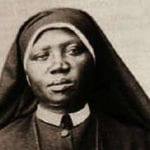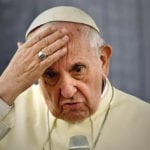 Music
Music  Music
Music  History
History 10 Less Than Jolly Events That Occurred on December 25
 Weird Stuff
Weird Stuff 10 Funny Ways That Researchers Overthink Christmas
 Politics
Politics 10 Political Scandals That Sent Crowds Into the Streets
 Weird Stuff
Weird Stuff Ten Bizarre Facts About The Doge Meme
 Our World
Our World 10 Ways Your Christmas Tree Is More Lit Than You Think
 Movies and TV
Movies and TV The 10 Coolest Stars to Set Sail on The Love Boat
 History
History 10 Things You Didn’t Know About the American National Anthem
 Technology
Technology Top 10 Everyday Tech Buzzwords That Hide a Darker Past
 Humans
Humans 10 Everyday Human Behaviors That Are Actually Survival Instincts
 Music
Music 10 Surprising Origin Stories of Your Favorite Holiday Songs
 History
History 10 Less Than Jolly Events That Occurred on December 25
 Weird Stuff
Weird Stuff 10 Funny Ways That Researchers Overthink Christmas
Who's Behind Listverse?

Jamie Frater
Head Editor
Jamie founded Listverse due to an insatiable desire to share fascinating, obscure, and bizarre facts. He has been a guest speaker on numerous national radio and television stations and is a five time published author.
More About Us Politics
Politics 10 Political Scandals That Sent Crowds Into the Streets
 Weird Stuff
Weird Stuff Ten Bizarre Facts About The Doge Meme
 Our World
Our World 10 Ways Your Christmas Tree Is More Lit Than You Think
 Movies and TV
Movies and TV The 10 Coolest Stars to Set Sail on The Love Boat
 History
History 10 Things You Didn’t Know About the American National Anthem
 Technology
Technology Top 10 Everyday Tech Buzzwords That Hide a Darker Past
 Humans
Humans 10 Everyday Human Behaviors That Are Actually Survival Instincts
10 Dirty Secrets Of The Catholic Church
Throughout its long history, the Catholic Church has been rocked by scandals ranging from the dissolution of the Knights Templar to Galileo’s trial to Mother Theresa’s questionable donors. Over the course of the 20th century, many more scandals have come to light—no matter how much the Church would like to keep them secret.
10The Duplessis Orphans

In the 1930s and 1940s, a conservative revolution ushered in an era in Quebec now known as “The Great Darkness.” Led by Premier Maurice Duplessis, the period was characterized by unprecedented corruption and repression, much of which involved the Catholic Church. After Duplessis received the provincial Church’s support during his rise to power, he sought to repay the favor with a bizarre moneymaking scheme revolving around institutionalizing children.
At the time, federal subsidies for mental hospitals were much larger than those given to orphanages, which were largely the responsibility of the provincial government. Beginning in the 1940s, the Duplessis government, in collaboration with the Catholic Church (which ran the majority of the province’s orphanages and mental hospitals) began to systematically diagnose orphaned children with mental diagnoses they did not have. As a result of these false diagnoses, the orphans were sent to psychiatric institutions, where they qualified for the higher federal subsidy. In some cases, orphanages were emptied after their children were declared mentally incompetent, then the orphanage was converted into an insane asylum so the Catholic Church could make more money from the subsidies. Around 20,000 children were wrongly diagnosed and imprisoned in this way.
To make matters worse, many of the orphans weren’t exactly orphaned. Instead, some of them were simply the children of unwed mothers forcibly taken into the custody of the Church, who frowned upon the very existence of childbirth out of wedlock. After being institutionalized, the children were subject to a nightmarish life that included sexual abuse, electroshock therapy, and even forced lobotomies. Some children were used in drug testing and other medical experiments. Many died as a result of their treatment.
By the 1990s, about 3,000 surviving Duplessis Orphans organized to bring their stories to light and pressure the Canadian government for justice. Though they were eventually granted a monetary settlement from the Quebec government, the Catholic Church has yet to apologize for its role in the scandal.
9Home Children
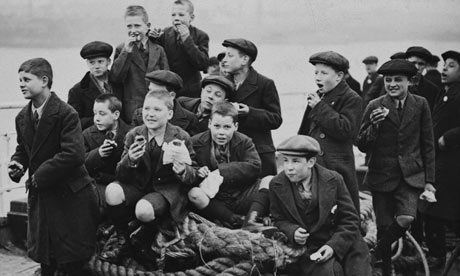
During the 19th and 20th centuries, around 150,000 British “Home Children” were sent to Australia, New Zealand, Canada, and Rhodesia. The scheme arguably dated back as far as the 17th century, but what’s surprising is how long it lasted—between 1947 and 1967 as many as 10,000 children were shipped from the United Kingdom to Australia.
Those behind the scheme had clear ideological intentions—they wanted to ensure that the colonies in question would have white majorities. The British children chosen to be shipped across the world were often referred to as “good white stock.”
Competing religious groups, including the Catholic Christian Brothers, sought to use the scheme to increase their followers in the colonies. Between the late ’30s and early ’60s, the Catholic Church shipped at least 1,000 British and 310 Maltese children to Catholic schools in Australia, where many were forced to do construction work or other hard labor.
In addition to forced labor, subsequent inquiries have found that many of the migrant children in the Church’s care were brutally beaten, raped, and starved—some children were made to “scramble for food thrown on the floor” to survive. Many of the children were stripped of their birth name. Decades later, in 2001, the Catholic Church in Australia confirmed the crimes committed and issued an apology.
8Spain’s Stolen Children
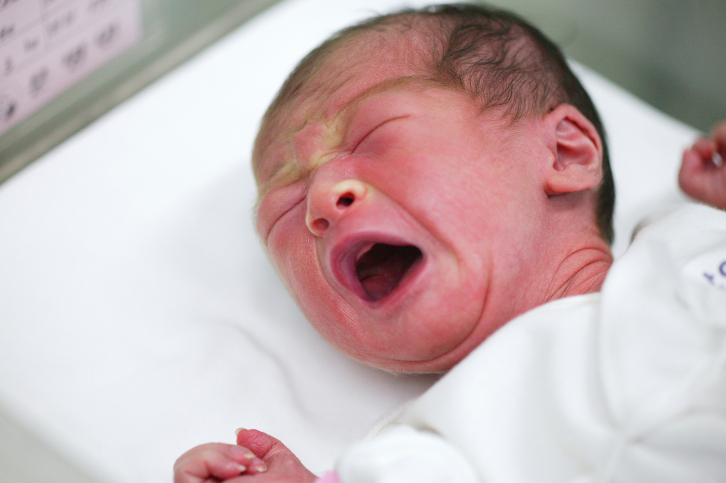
Starting in the 1930s, the fascist regime of Francisco Franco sought to purify Spain by stealing the babies of “undesirable” parents and having them raised in more politically acceptable surroundings. The scheme originally targeted the children of leftists, who the Spanish government saw as having “a form of mental illness that was polluting the Hispanic race,” but eventually came to target unmarried mothers and otherwise “unfit” parents. As many as 300,000 babies were eventually stolen from their parents.
The baby-stealing scheme was carried out with the close cooperation of the Catholic Church in Spain. After Franco rose to power calling himself the defender of Catholic Spain, the Church controlled most of Spain’s social services—from schools to hospitals to children’s homes. This allowed thousands of children to be stolen or otherwise removed from their parents by Catholic doctors, priests, and nuns.
In many cases, nurses in Catholic hospitals would take a newborn baby from its mother to be examined. The nurse would then return with a dead baby kept on ice for the purpose of persuading the mother that her baby had suddenly died. After the babies were stolen from their mothers, they were often sold in illegal profit-making adoptions.
After Franco died in 1975, the Church retained its grasp on Spanish social services and largely continued the scheme. The child kidnappings didn’t fully come to an end until 1987, when the Spanish government began tightening adoption regulations. It has been estimated that around 15 percent of adoptions in Spain between 1960 and 1989 were part of the kidnapping scheme.
7The Return Of Baptized Jewish Children
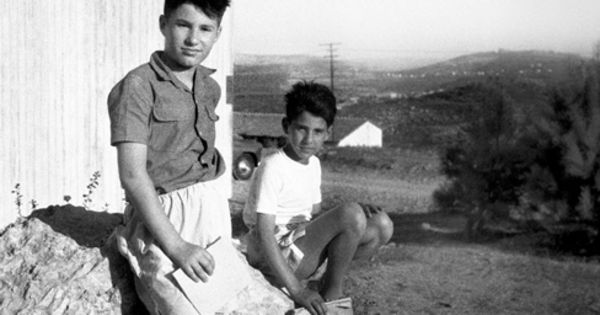
While Pope Pius XII has been condemned for remaining largely silent on the Holocaust and politics of Word War II, under his leadership the Catholic Church did take steps to save several thousand Jews from the Nazis. Some Italian and Hungarian Jews were issued false baptism certificates and other documents identifying them as Catholics. In France, many Jewish children were baptized and placed in Catholic schools and orphanages, effectively hiding them from the Nazis.
The problem is what happened next. When the war ended, the Catholic Church in France issued a directive forbidding its representatives from returning Jewish children who had been baptized to their families. The document, which claimed to have been “approved by the Holy Father,” firmly stated that “children who have been baptized must not be entrusted to institutions that would not be in a position to guarantee their Christian upbringing.”
Many of the children concerned had lost their parents in the Holocaust, and some were deliberately never told of their Jewish background. The issue first came to public attention in France with the case of Robert and Gerald Finaly, who became the subject of a lengthy legal battle after their surviving Jewish relatives attempted to regain custody from the French Catholics who had baptized them. Other French Catholics apparently ignored the Church’s order and agreed to return the Jewish children in their care, including the future Pope John XXIII, who was the Vatican’s representative in Paris at the time. To this day it is not clear how many Jewish children the Church saved—or how many it gave back afterward.
6Nazi Gold In The Vatican Bank
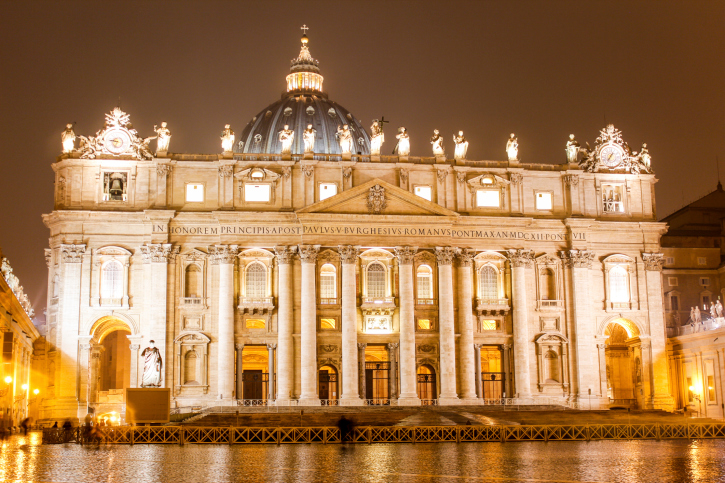
In 1947, a US Treasury agent named Emerson Bigelow apparently penned a highly classified report which alleged that the Catholic Church had smuggled Nazi gold through the Vatican bank. Although the report itself has been lost, a letter written by Bigelow explained that it contained information from a reliable source revealing that the Nazi’s puppet Utashe regime in Croatia had smuggled around 350 million Swiss francs in gold out of the country at the end of the war. According to Bigelow, perhaps 200 million francs of this was briefly held in the Vatican bank for safekeeping.
Bigelow’s letter also referenced information that the gold had subsequently been funneled through the “Vatican pipeline” to Spain and South America, where it was used to help Nazi and Utashe officials escape punishment for their crimes. The letter only came to light in 1997, after being declassified by the US government the year before. A spokesperson for the Vatican bank denied the claims, but the Catholic Church remains embroiled in lawsuits over its alleged laundering of Nazi gold.
In 2000, a class action lawsuit was brought by around 2,000 Holocaust survivors and relatives who sought restitution from the Vatican up to $200 million, using the Bigelow letter and other recently declassified documents to allege that the Vatican had improperly harbored gold stolen from Europe’s Jews. The suit has since stalled, with American courts split on whether the case can be tried in the US.
5The Alliance With Fascism
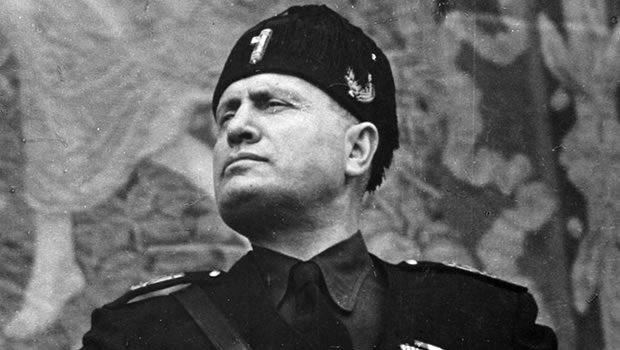
Today, the Vatican is famously the smallest country in the world, but it hasn’t always been that way. Rome was the capital of the Papal States for hundreds of years. But after Italy was united in the 19th century, the Pope lost his temporal territories, causing a tense standoff between Church and state. The Vatican only officially became its own country again in 1929—and it did so because the Catholic Church got into bed with fascism.
In 1922, Benito Mussolini and his National Fascist Party came to power, eventually abolishing democracy and forming a brutal dictatorship. In 1929, Mussolini and the Catholic Church signed the Lateran Treaty, resolving the crisis by granting the Church the status of a sovereign state within Italy. To sweeten the deal, Mussolini gave the Church a hefty cash settlement. The Church in turn used the money to create a lucrative international investment portfolio, which is now valued at around £500 million (USD $781 million).
The Church was also given a generous tax exemption and Catholic priests were given a guaranteed salary by the Italian government. The treaty also officially made Catholicism Italy’s state religion, making religion classes compulsory for all Italian schoolchildren unless a special exemption was granted.
The treaty also included a clause protecting the “dignity” of the Pope, effectively meaning that those who criticized the Church could be prosecuted. In 2008, an overzealous Roman prosecutor launched an investigation into an Italian comic who made a joke criticizing Pope Benedict. Fortunately, the attempt was blocked by the Italian Justice Ministry, a decision officially supported by the Vatican.
In return for signing the treaty, Mussolini’s fascist dictatorship received the public support of the Catholic Church and was recognized as the legitimate government of Italy, despite the fact that Mussolini had abolished democracy four years prior. After the treaty was signed, the Vatican’s official newspaper praised Mussolini, stating: “Italy has been given back to God and God to Italy.”
4Hiding Child Abuse And Protecting Pedophiles
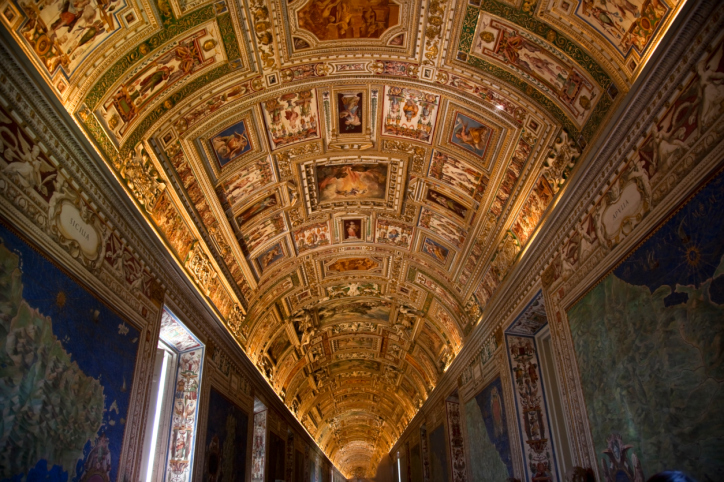
Widespread child abuse within the Catholic Church has been a problem for a long time, but the issue didn’t truly come to public attention until the late 1980s. The abuse is a huge scandal in and of itself, but the fact that it took so long to come to light speaks to an even larger crime: The Catholic Church as an institution deliberately sought to cover up child abuse and systematically protected pedophile priests.
The issue was fully brought to light in 2002, when five Catholic priests were tried in Boston for their horrifying abuse of children. One of the convicted priests, Father John Geoghan, had allegedly molested as many as 130 boys before he was caught. But Father Geoghan’s superiors had learned of his crimes long before he was charged in a court of law. Not only did the Church not turn him over the authorities, they didn’t even expel him from the priesthood. Instead, they simply reassigned him to other parishes, where he continued to abuse children with impunity.
In Wisconsin, a Catholic priest named Lawrence Murphy raped as many as 200 deaf and disabled boys at a Church-run school between 1950 and 1974. When Murphy’s superiors became aware of the abuse, they didn’t even fire him from his teaching job. Instead, they gave him a leave of absence. It wasn’t until 1996 that the Church internally investigated the abuse. However, the Church decided not to punish the child rapist because he was elderly and in poor health. Murphy died a few months later and was buried with “the full dignity and honors of a Holy Roman Catholic Priest in good standing.”
In February 2014, a special United Nations committee on child rights found that the Catholic Church had “systematically” protected priests who raped children, and is consequently responsible for allowing “tens of thousands” of children to be abused. The committee claimed that the Church has “consistently placed the preservation of the reputation of the Church and the protection of the perpetrators above children’s best interests.”
The current Pope, Pope Francis, recently claimed that he had reliable data indicating that around 2 percent of Catholic clergymen are pedophiles. There are currently around 414,000 Catholic priests around the world. So according to the Pope himself, there are an estimated 8,000 pedophile priests currently working for the Catholic Church.
3Magdalene Asylums
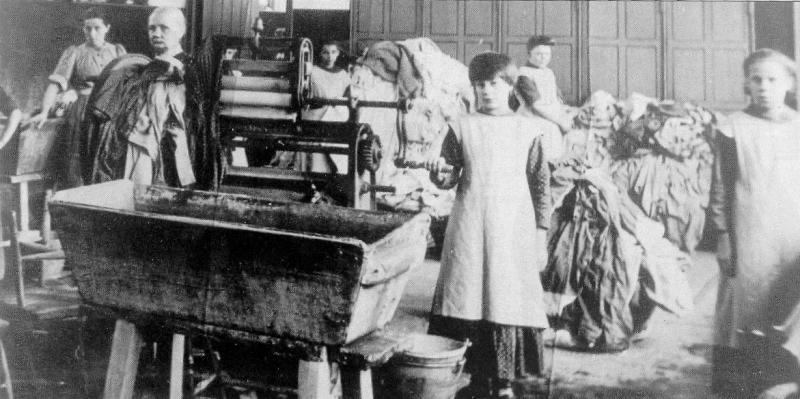
Based on their ultraconservative notions about sexuality, the Catholic Church imprisoned women suspected of prostitution or promiscuity in Church-run institutions known as the Magdalene asylums. Initially, women were committed to the asylums to receive pseudo-psychiatric “treatment” for alleged sinfulness or promiscuity. Many women were sent to the asylums by their own families.
Occurring mainly in Ireland, the imprisoned women were forced to do slave labor, mostly related to washing clothes, for seven days a week. Of course, the Church was getting paid for the work, since the laundries were operated for a profit. The imprisoned women endured horrific beatings, poor food, and sexual abuse. It has been estimated that as many as 30,000 women were forced into the Irish laundries.
The asylums operated in Ireland from the 18th to the late 20th century, but they didn’t become a matter of public debate until 1993, when 155 bodies were uncovered in a mass grave in North Dublin. The asylum authorities had buried the women in secret, without telling their families or even the authorities that they had died—none of the 155 women had a death certificate.
In 2013, the Irish authorities agreed to pay at least $45 million in compensation to the survivors after the United Nations Committee Against Torture urged the government to make the situation right. The Catholic Church has yet to apologize.
2Nazi Ratlines
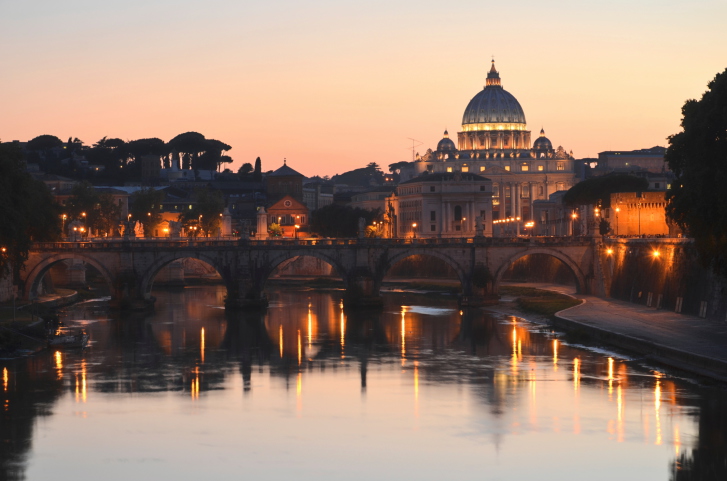
At the end of World War II, many Nazi war criminals attempted to flee Europe to avoid prosecution. In at least some cases, they received help from senior Catholic clergymen. In December 1944, the Church allowed a bishop named Alois Hudal to visit Nazi prisoners held in Allied internment camps, presumably for religious purposes. However, Bishop Hudal instead used his position to help a number of Nazi war criminals flee to safety.
Hudal helped to set up escape routes known as “ratlines,” allowing wanted Nazis to flee to relative safety in South America. He used his position in the Church hierarchy to obtain travel documents from the Vatican Refugee Organization. A number of senior Nazis were actually given Vatican state passports, which allowed them to disguise themselves as priests.
One of the Nazis who Bishop Hudal helped escape was Franz Stangl, who would remain at large until 1967, when he was arrested in Brazil. Stangl was then extradited to West Germany and convicted of overseeing the mass murder of 900,000 Jews.
Meanwhile, a group of Croatian priests operating out of a Catholic seminary college in Rome would set up an escape route now known as the San Girolamo ratline. Led by Father Krunoslav Draganovic, the organization was initially founded to help members of the Utashe escape Europe, but its operations soon expanded to include German Nazis like Klaus Barbie.
At least 9,000 Nazis escaped to South America after the war. The extent to which the Church as an institution helped them to do so remains controversial. The historical consensus is that Hudal and Draganovic acted without the Vatican’s knowledge or approval, but historians have also argued that the Church could have done more to ensure its refugee program wasn’t exploited by fleeing war criminals.
1The Croatian Holocaust
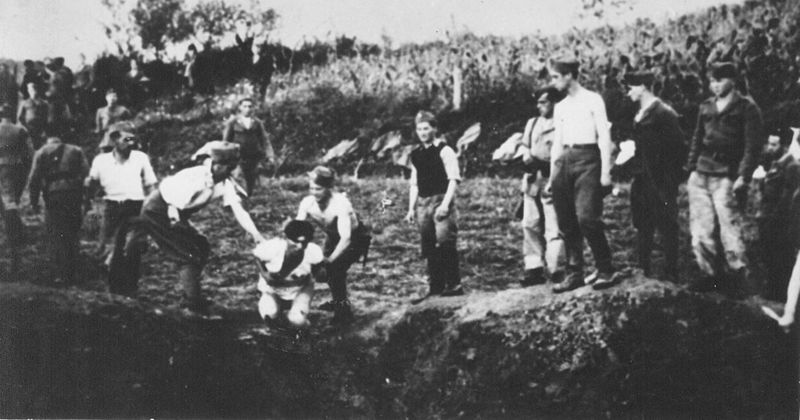
While the concentration camps run by the Nazis during World War II are probably best known today, there were many similar concentration camps in other countries, including some in Yugoslavia run by Catholic priests.
After the Axis Powers occupied Yugoslavia in 1941, a new fascist government was formed called the Independent State of Croatia, which is considered to have been a “Nazi puppet state.” The new government was run by the Utashe, Croatia’s version of the Nazis, headed by a dictator named Ante Pavelic. The Utashe were defined by ultraconservative Catholicism and racism.
After Pavelic took power, the Catholic archbishop Aloysius Stepinac held a banquet for the dictator, proclaiming him “God’s hand at work.” Pavelic was also received by Pope Pius XII himself. Four days before Pavelic met the Pope, the Utashe had locked hundreds of Serbians inside an Orthodox church and burned it to the ground. Yugoslav diplomats warned the Pope of the atrocities and asked him not to meet with the fascist dictator, but Pope Pius XII refused their request.
Months later, an Utashe leader suggested destroying Croatia’s Serbian population by “killing one third, expelling the other third, and assimilating the remaining third.”
Such genocidal ambitions soon became a horrifying reality. Concentration camps were set up across the country, including one of the largest camps in Europe at Jasenovac, where as many as 800,000 Serbs, Jews, Gypsies, and political dissidents were killed. Croatian Catholic clergymen served as guards and even executioners in the camps. At Jasenovac camp, a former student priest named Petar Vrzica won a contest by slitting 1,350 throats in a single night.
The slaughter wasn’t contained in the camps either. The Ustashe would descend on villages with hatchets and knives. One attack in 1942 was led by a priest and may have killed as many as 2,300 Serbs. A survivor of the attack described how the Utashe beheaded young children then threw the decapitated heads at their horrified mothers, cut open the stomachs of pregnant woman, and raped young girls as their horrified families watched.
As all of this went on, Pavelic continued to exchange “cordial telegrams” with Pius XXI. The Catholic press in Croatia published propaganda for the fascist regime. The Vatican never once spoke out against the massacres.
After the war ended and Yugoslavia was liberated by communist partisans, Archbishop Stephinac was convicted of war crimes and sent to Lepoglava prison. However, the new Yugoslavian state later released him after pressure from the Vatican. Stephinac was later appointed a cardinal by Pius XII. In 1998, he was beatified by Pope John Paul II.
Nathan is a freelance journalist and screenwriter.


